He remembers the first doctor visit vividly.
Less than 24 hours after suffering a foot injury at a CrawsOver Pro-Am league game in Seattle, Chet Holmgren had flown to Oklahoma City to get it looked at. And as he sat in the x-ray room in front of OKC Thunder GM Sam Presti, a wide range of emotions began to kick in.
Hearing him describe it, it sounds like somewhere between guilt, pain, disappointment, sadness and distress. Probably a little hint of all of them.
It was late August 2022, and the start of training camp was just about a month away. For Holmgren, that signaled the highly anticipated debut of his rookie season after being selected with the No. 2 overall pick in the NBA Draft earlier in the summer. Fans had already gotten a glimpse of his talent at Summer League weeks earlier. But it appeared that his real debut would have to be put on hold for the foreseeable future. The prognosis didn’t look promising.
“I’m doing imaging, I’m sitting on the doctor’s table and I’m talking to Presti, and I’m just falling apart because he just drafted me two months, month and a half prior, and it’s like, you want to kind of validate his belief in you and the organization’s belief in you. And then you get hurt and you feel like you let everybody down, even though I wasn’t wrong for it, I was trying to get better and trying to hoop,” says Holmgren, who was ultimately diagnosed with a Lisfranc injury to his right foot. “But I just remember sitting there and just falling apart. Not like apologizing, because I knew I had nothing to apologize for, but I was just so hurt by it. And then he was giving me advice, and he’s a big, big process guy. So, he was just reminding me, like, the process is going to win in this. And that’s part of why I took everything so serious and didn’t cheat any corners or anything. Just because I had people reminding me that the process is always going to win in the end.”
SLAM 248 featuring Chet Holmgren is available now. Shop here.
Nine days later, he’d have surgery. The recovery timeline meant he’d have to miss the entire upcoming season. And for the following eight weeks post-surgery, he’d have to wheel himself around on a scooter. Not like that was ever going to stop him from hitting the hardwood and getting up some shots.
“I was out there on the court, standing on one leg with the other leg up on a scooter, just shooting as many shots as I could shoot before they made me go sit down—they’d be telling me, like, Go home!,” he recalls. “But when you’re just standing on a scooter, you’re not getting tired, so I was like, I can do this all day.”
Setbacks help put things into perspective, and this particular one was no different for Chet. Mundane everyday tasks all of a sudden became the most challenging and time-consuming missions ever. But it’s the ability to reflect back on those moments, unpack them and articulate the frame of mind derived from the experience that makes it all worth it for the 21-year-old.
“I was literally wheeling around on a scooter for the first eight weeks post-surgery. You know, it really makes you realize what you’re taking for granted when just the ease of life is taken away—I couldn’t drive anywhere, it was my right foot, so I’m pretty much relying on other people to get me around. Everything’s harder,” he says. “I gotta hop around, getting in and out of the shower, everything’s more difficult. So, it really makes you appreciate all the small things that you can really do every single day with ease. And I feel like I didn’t take it for granted before, but [I] definitely don’t now.”
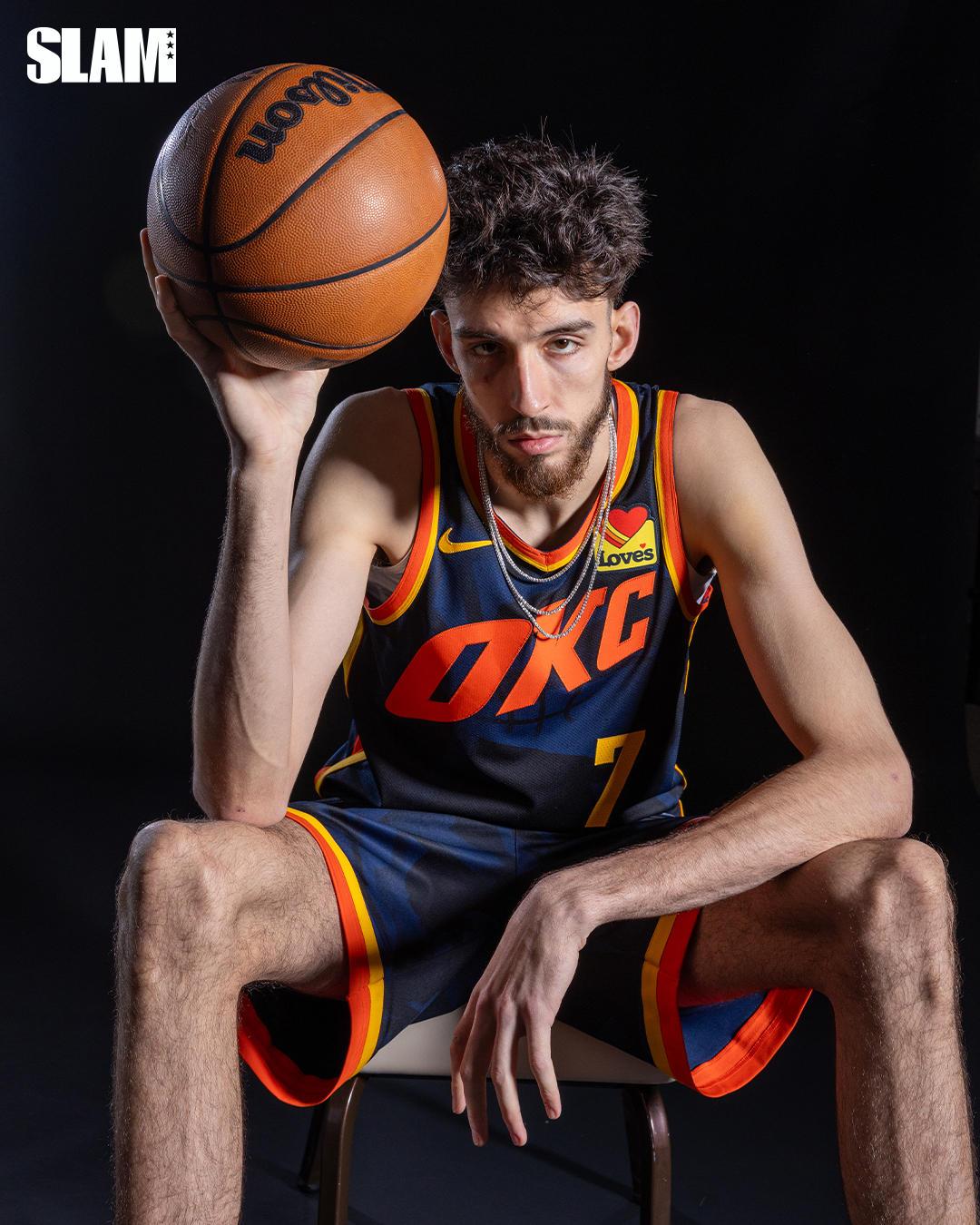
His first game back would be almost a year later at Summer League in Salt Lake City last July. A light 15 points, 9 rebounds and 4 blocks.
“I just remember I was so amped to get out there and play. And I was just so ready. And I remember the first time I touched the ball, I got so excited [that] I just put up a terrible shot,” says Holmgren, laughing. “It was an awful shot. And nobody looked at me wrong for it—cause I feel like everybody understood—but at the same time it was a terrible shot. I just wanted to make sure I came out aggressive, ’cause I was ready to play. I’d been waiting 13 months to play. I hadn’t played a game in 13 months. There was a lot of emotion around it. I had my family out there watching me and all my teammates were supporting me in that moment, but they’d been supporting me throughout the whole process.”
It wouldn’t take long for him to start turning heads in the regular season. In just his second outing, Holmgren set the franchise record for most blocks in a single game by a rookie with 7. This came as no surprise to anyone who saw him play at Gonzaga, where in his college debut, he matched the program’s single-game blocks record—which, coincidentally, was also 7.
By the time Chet was one month into the NBA’s regular season, he had also become the first rookie in franchise history to have multiple 30+ point outings in the first month of his career. In fact, he dropped 30+ twice within a four-game window.
To no one’s surprise, he was named Rookie of the Month in the Western Conference for October/November. And in December, he showed no signs of slowing down, averaging 17.4 points, 7.7 rebounds and 3.5 blocks in 13 games on his way to yet another Rookie of the Month nod.
He ranks top four in the NBA in blocks per game as of late January.
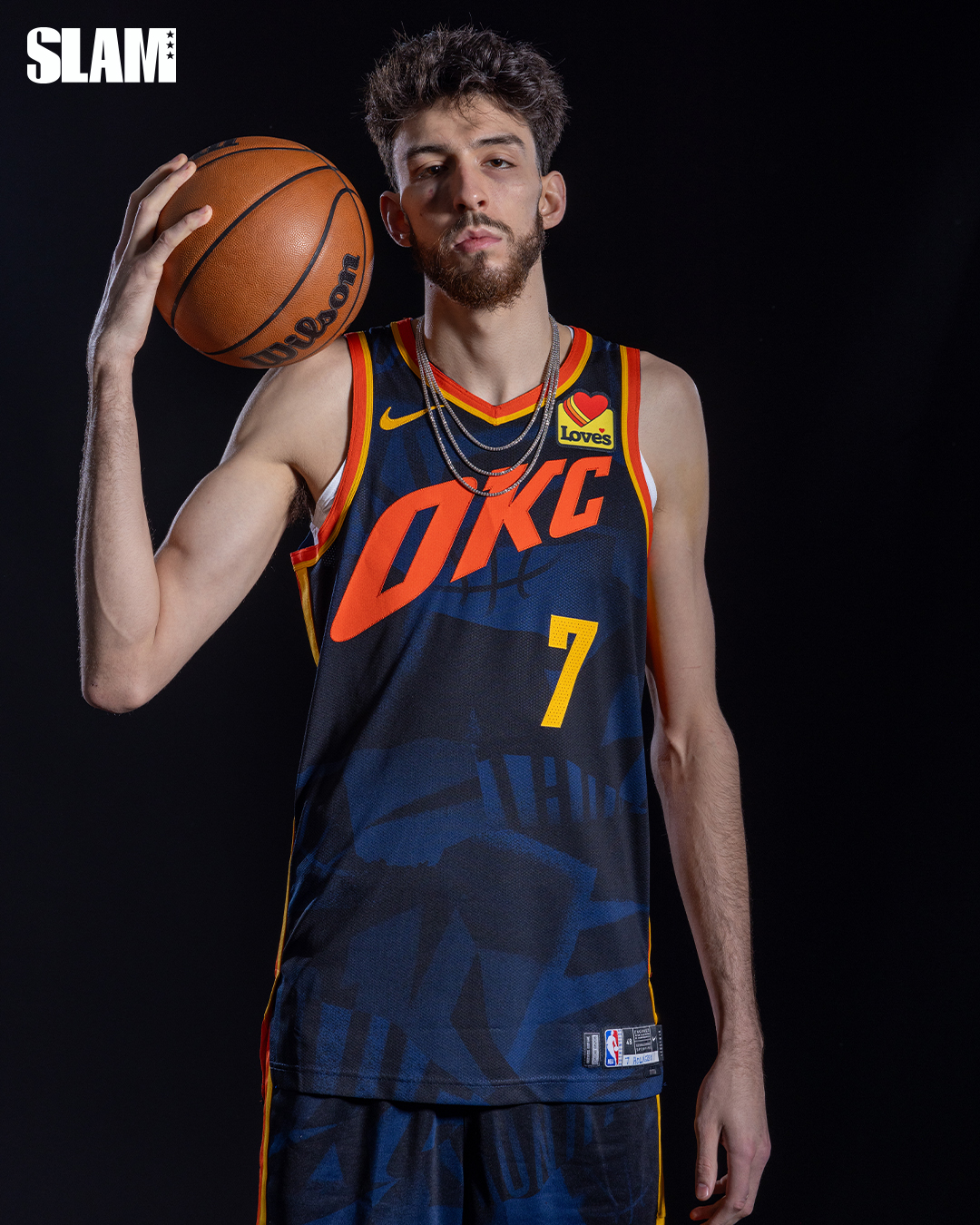
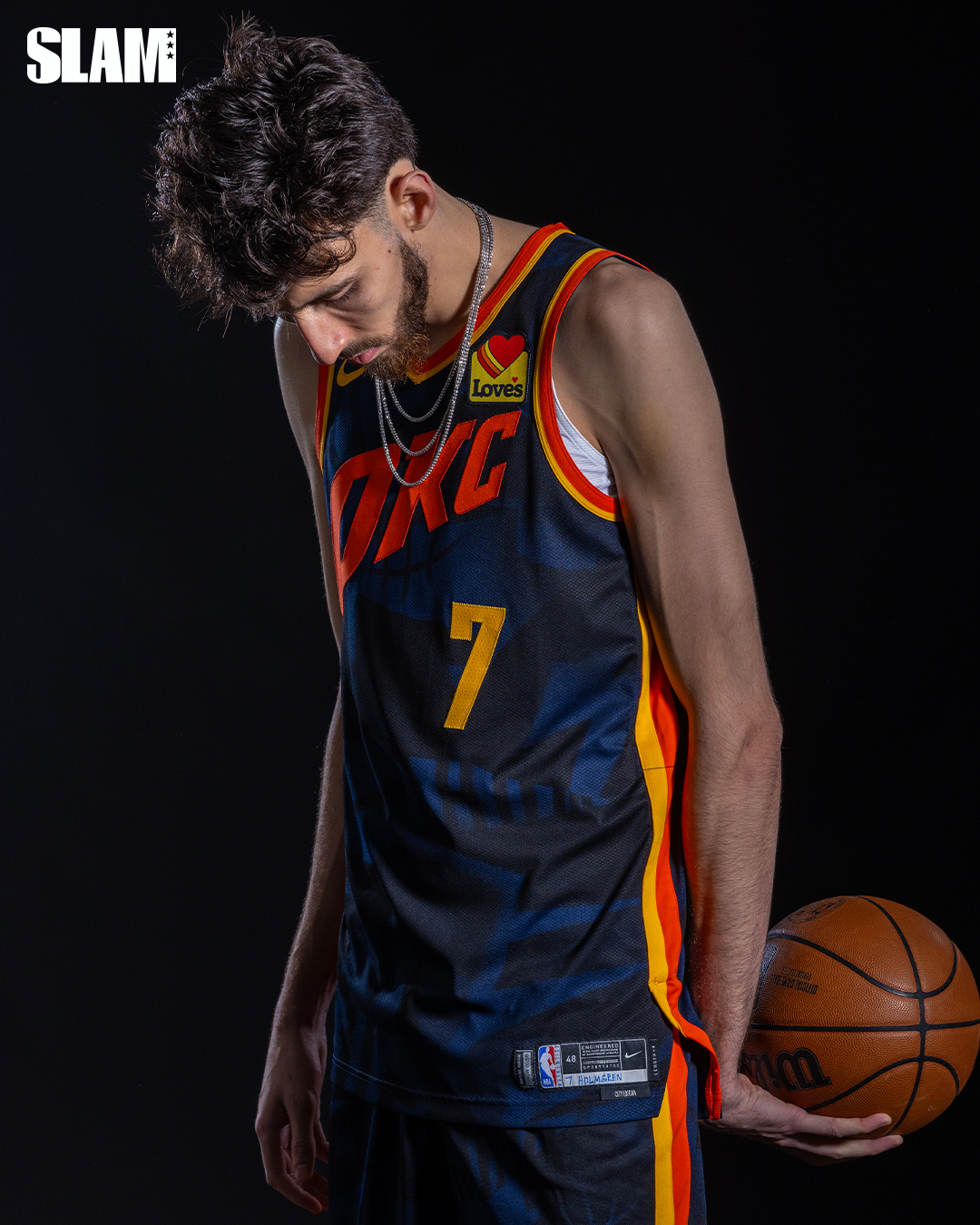
In retrospect, trusting his foot wasn’t an issue at all upon returning. If anything, it became the least of his worries.
“The biggest thing that I learned from injuries is, like, where you got injured, you’re working so hard to strengthen it, that part of your body is going to be good. It’s more all the things around it that get deconditioned so much when you’re sitting out and just letting your body heal,” says Holmgren. “So, your foot’s good now, but now your back’s weak, so your back is getting tight, and then now your knee hurts ’cause you haven’t been putting that pressure on it and keeping it as strong. And then you got shin splints ’cause you’ve been sitting out for so long that that needs to recondition. So, it’s like all the little things around it pop up. But if you’re able to manage that and then kind of stay on top of it, over time it’ll go away.”
The impressive early start to his career has him in a tight race with San Antonio Spurs big man Victor Wembanyama for Rookie of the Year.
Not only has Chet put up big numbers—tune in to a Thunder game and you would think he’s been part of their rotation for a handful of years based on the way he’s been able to seamlessly fit in. The impeccable chemistry has helped propel the franchise to the top of the Western Conference standings. At a little over the halfway mark of the season in late January (as we head to printers), the Thunder find themselves half a game from the No. 1 spot in the West.
“I mean, I don’t have expectations, but at the same time, I’m not surprised by anything that I do,” says Holmgren. “I feel like whatever I go out there and do is an accumulation of the work that I’ve put in. I know what I can do. I know what I need to work on. And what I go out there and do are things that I’ve been working on my whole life. So, am I surprised by what I’m doing? No.”
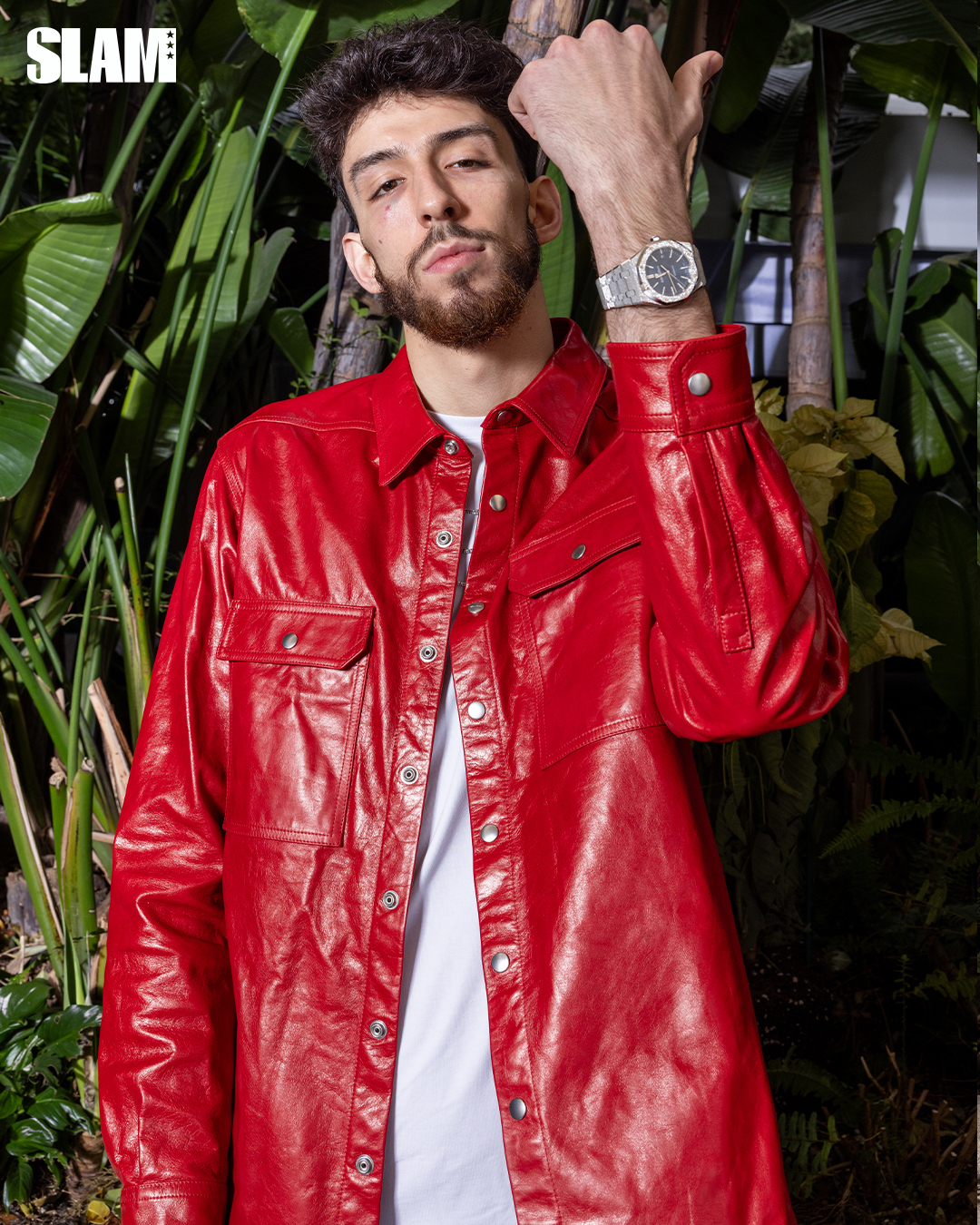
It’s not often that a team has one player in serious contention for the MVP award while another one is doing the same in the ROY race, but that’s exactly where this OKC franchise finds itself with its duo of Chet and Shai Gilgeous-Alexander. Nor is it often that a team that didn’t even make the playoffs the prior season is now vying for the No. 1 seed in the conference. This is undoubtedly a new era for the franchise, and Chet is poised to help bring back that same aura that he remembers the Thunder having in middle school when Kevin Durant, James Harden and Russell Westbrook were all teammates during their early years in the League.
“I remember watching their playoff series back in, like, ’11, ’12, ’13 and everybody’s wearing the same color shirt, screaming [in the stands],” says Holmgren.
“We’re gonna get back to that point.”
SLAM 238 IS OUT NOW!

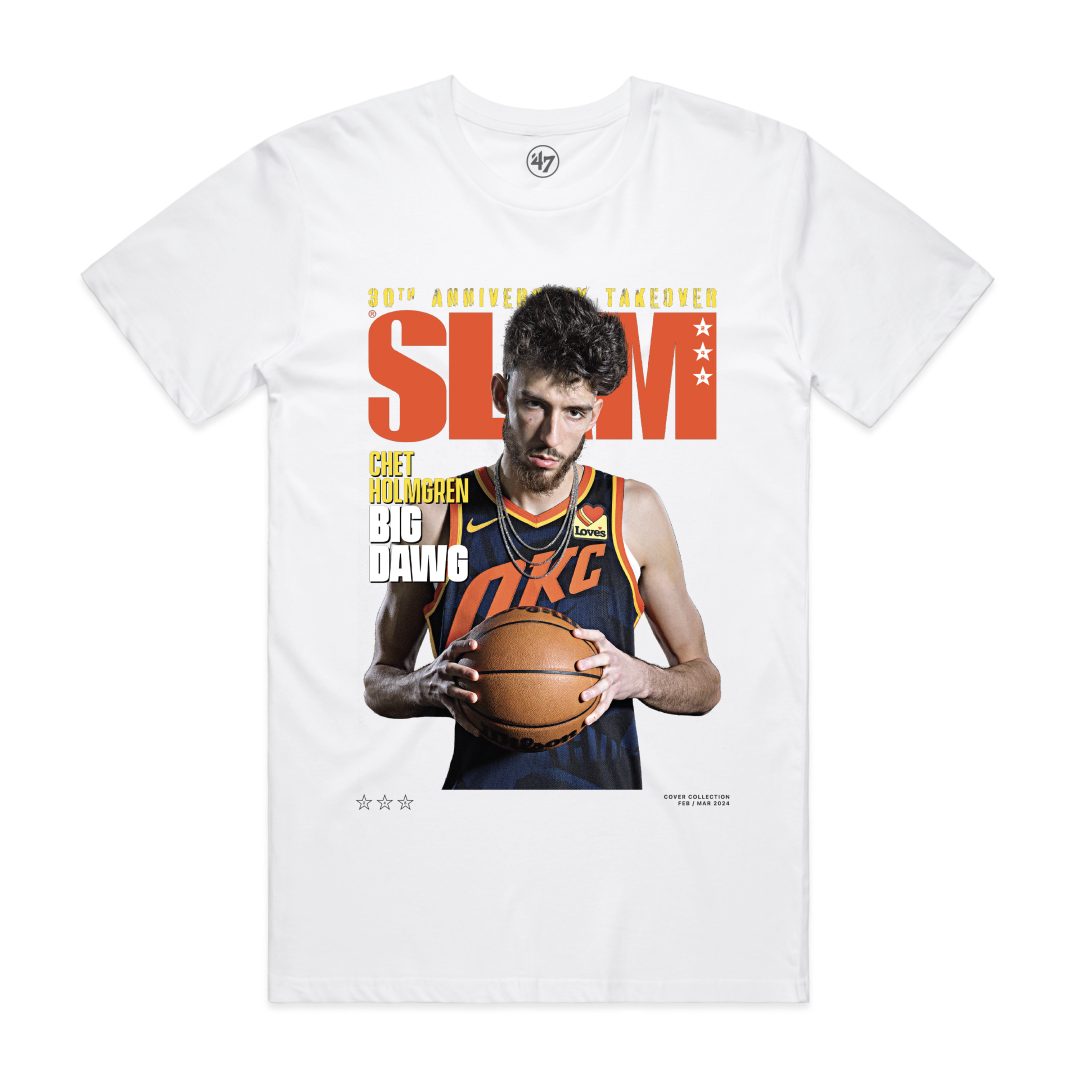
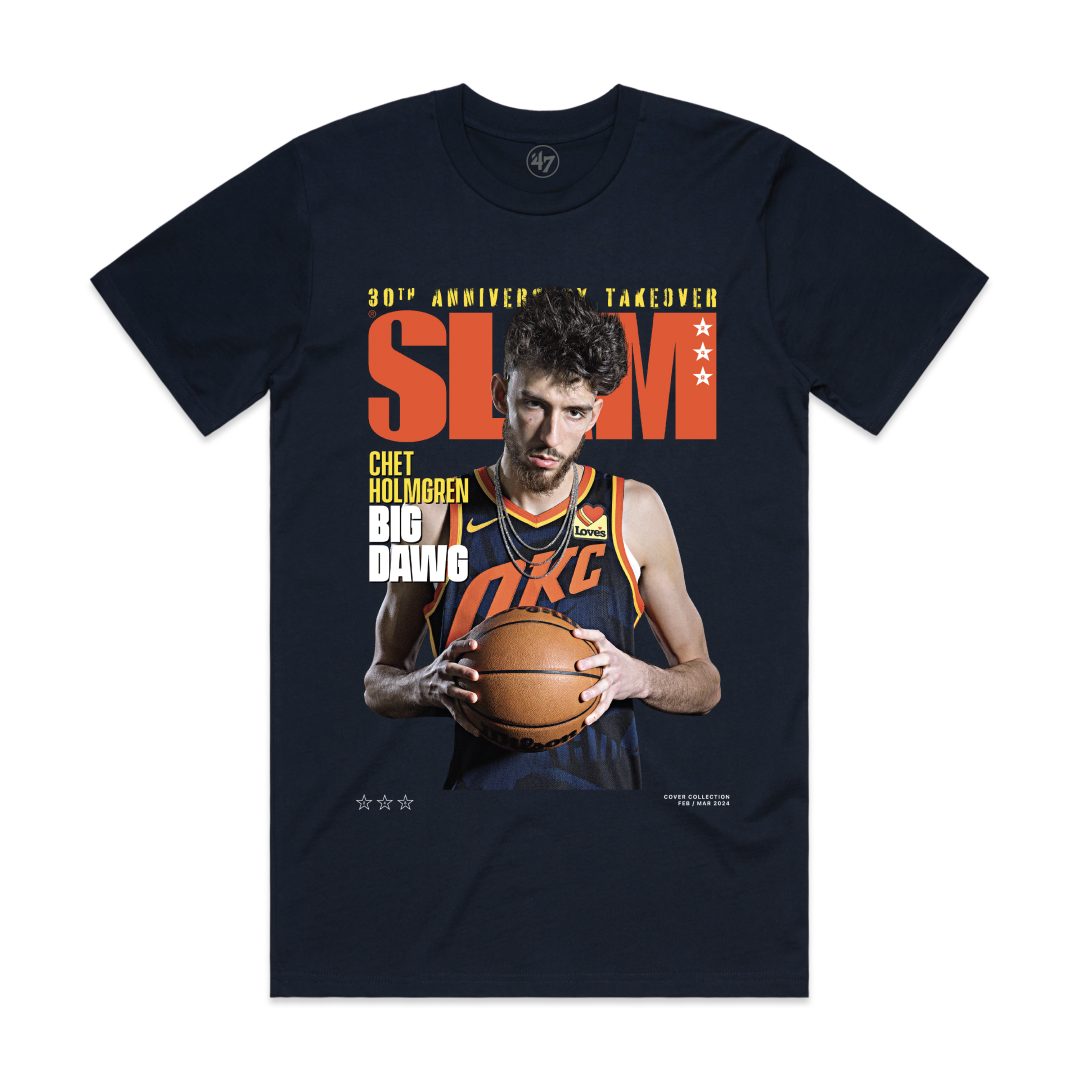
Portraits by Atiba Jefferson.






